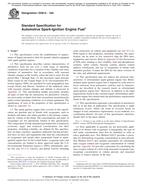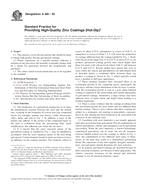1.1 This test method describes a steady state technique for the determination of the thermal conductivity, , of homogeneous-opaque solids (see Note 1 and Note 2). This test method is for materials with effective thermal conductivities in the approximate range 0.2 200 W/(mK) over the approximate temperature range between 90 and 1300 K. It can be used outside these ranges with decreased accuracy. Note 0For purposes of this technique, a system is homogeneous if the apparent thermal conductivity of the specimen,
Note 2
This test method may also be used to evaluate the contact thermal conductance/resistance of materials.
1.2 This standard does not purport to address all of the safety concerns, if any, associated with its use. It is the responsibility of the user of this standard to establish appropriate safety and health practices and determine the applicability of regulatory limitations prior to use.
Product Details
- Published:
- 05/01/2004
- Number of Pages:
- 8
- File Size:
- 1 file , 150 KB
- Redline File Size:
- 2 files , 260 KB


